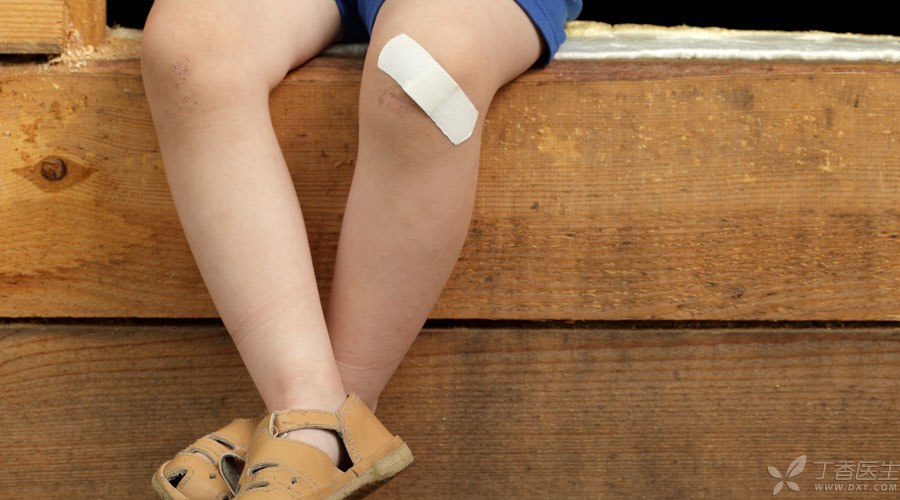
Learn the correct hemostasis method, accidentally scratch bleeding, you can solve it yourself, don’t have to run to the hospital.
There will inevitably be bumps and bumps in life. If you encounter emergency bleeding and see blood bubbling out, are you a little confused? Even if you don’t know what to do, don’t blindly use [folk prescription].
This is not true. A parent stopped the bleeding of his child with white sugar, which really made the doctor laugh and cry.
Sprinkle white sugar to stop bleeding, unreliable
One night, a pair of young parents were holding a 4-year-old boy to the emergency department. The child was covered with blood. When washing him, the emergency department doctor accidentally discovered that there were many foreign bodies in the wound, fine particles and sparkling.
When asked, the child’s mother said that when her son fell down, his head was knocked on the iron sheet and blood flowed. Worried that the blood could not stop, she remembered that the online folk prescription said that white sugar could stop bleeding, so she hurriedly grabbed a handful of white sugar and sprinkled it on the wound.
Director Tan Duxun told parents: [Sprinkle sugar on the wound, which not only cannot stop bleeding, but also may cause infection.]
If the sugar is sprinkled too much and the concentration is too high, the wound may form a hypertonic environment locally, which is not conducive to the healing of the wound. Scalp trauma is best treated by compression hemostasis, and can be wrapped under pressure with clean ropes or bandages. The wound is large and the situation is serious. The patient should also go to the hospital as soon as possible.
[One Pressure and Two Packages] Hemostasis
1. Compression hemostasis
Director Tan Duxun said: [When you see the wound bleeding, immediately press and hold the bleeding area with your hand. This is the compression hemostasis method.]
In addition to directly compressing the wound with clean gauze and other articles to stop bleeding, fingers can also be pressed on the adjacent bones near the heart end of the bleeding artery to block the blood source so as to achieve the purpose of stopping bleeding.
If the bleeding site is limbs, the injured bleeding arm or leg can be raised to help stop the bleeding.
Step 2 Bundle
Compression hemostasis only plays a temporary role and will eventually be solved by bandaging. Binding can be done with gauze, bandage or clean cotton cloth. If conditions permit, it is best to disinfect the wound before bandaging.
The principle of bandaging is to cover first and then wrap, with moderate strength.
First cover the wound with a cotton pad larger than the wound, and then wrap it with bandages or triangular towels. After the bandaging is completed, check the tightness, don’t tie it too tightly, and it is better to be comfortable.
3. If you can’t stop bleeding, you should go to the hospital immediately.
If it is a wound with a large wound surface and cannot stop bleeding, you must go to a regular hospital for treatment immediately.
Band-Aids are not Tiger Balm
Some people say, hemostasis is still so complicated? With Band-Aids, it’s all done! However, Band-Aid is not a panacea and cannot cure all injuries.
Tan Duxun pointed out that Band-Aid is only an emergency tool for hemostasis and bandaging.
Band-Aid has poor water absorption and air permeability, which is not conducive to blood absorption and drainage, but is conducive to bacterial growth and reproduction. If you always stick Band-Aid, the wound is not only not easy to heal, but also easy to cause infection.
In addition, if the skin damage is deep and the wound is large, and the site is treated unconditionally, the wound can be washed with clear water first, and then simply bandaged with Band-Aids. At the same time, regular disinfection treatment must be carried out in the hospital as soon as possible to avoid secondary infection.
In these cases, don’t use Band-Aids.
Tan Duxun reminded that Band-Aids cannot be used in the following situations:
1. Deep and narrow wounds, such as nails that accidentally hurt fingers and toes.
Do not use Band-Aids to bind the wound. After hemostasis, the wound should be exposed to prevent anaerobic bacteria, such as tetanus bacteria, from infecting the wound. When necessary (such as rusty nails and incisions), tetanus needles should also be given.
2. When the wound surface is not clean or there is a foreign body in the wound,
You can’t stick it directly with Band-Aid. You should debride or take out foreign bodies before disinfection and bandaging.
3. Wounds with large wounds
Should go to a regular hospital for disinfection, debridement, suture and bandaging.
4. Contaminated or infected wounds, wounds with secretions or pus
Band-Aids cannot be used in this case.
